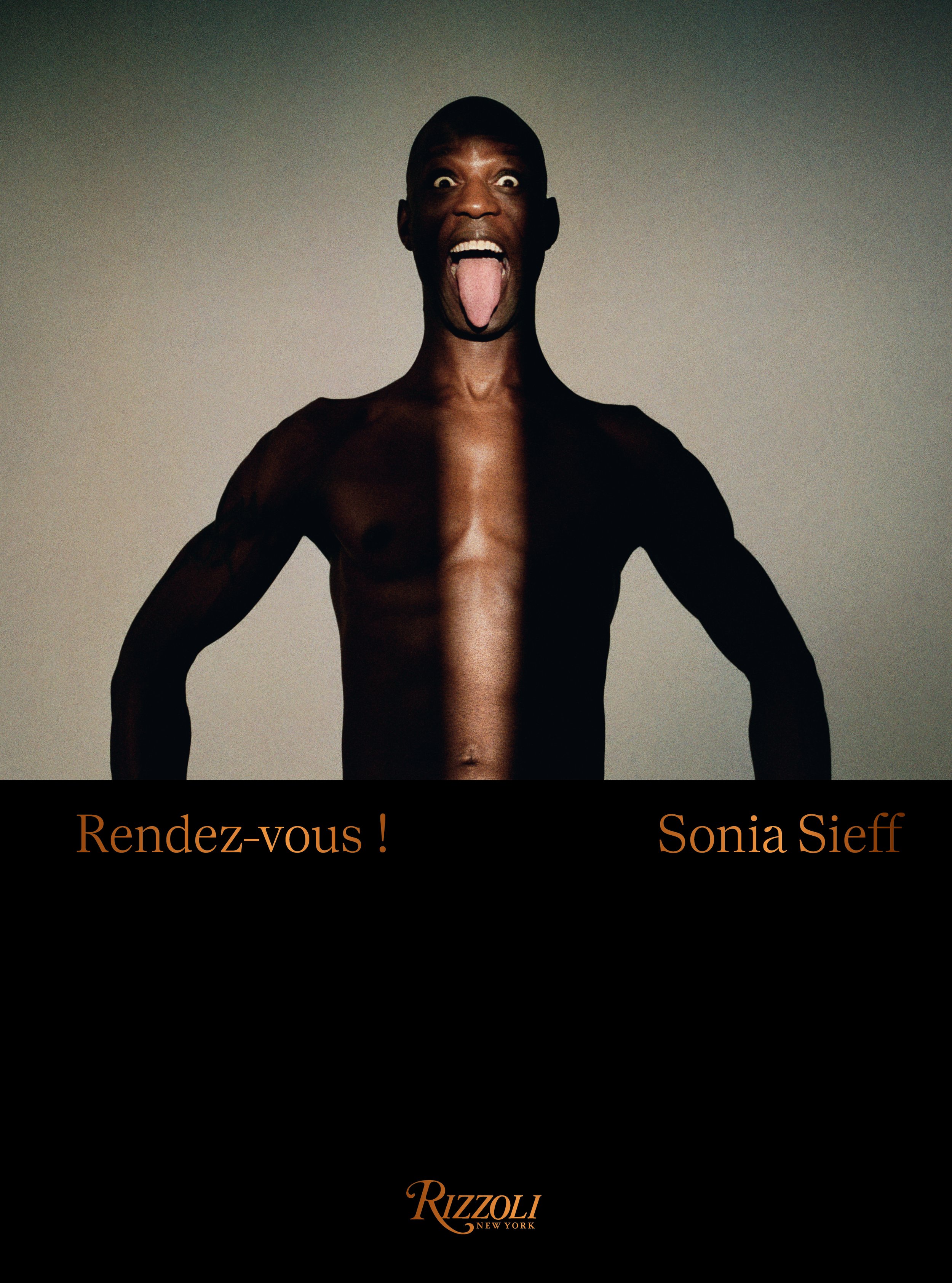REVEALING RENDEZ-VOUS: CHALLENGING NORMS WITH SONIA SIEFF'S MALE MUSINGS
BY IRVIN RIVERA
In the world of photography, where the lens often dictates the narrative, Sonia Sieff emerges as a formidable force of artistic audacity and introspective exploration. Her latest endeavor, "Rendez-vous!," stands as a testament to her relentless pursuit of uncharted territories—both geographical and thematic. Diverging from her intimate portraits of friends in "Les Françaises," Sonia embarks on a journey that traverses continents and challenges conventions, delving into the male nude with a refreshing and revolutionary perspective. This project is not just a collection of photographs; it is a bold political statement, a celebration of diversity and body positivity, and a deeply personal quest that questions and redefines the portrayal of masculinity through the female gaze. Sonia's narrative is rich with tales of travel, the rediscovery of analog photography, and a candid reflection on her multifaceted career, offering a glimpse into the mind of an artist who seeks to illuminate the nuanced beauty of the human form, and in doing so, invites us to surrender ourselves to the art of seeing.
Hi Sonia, Thank you for your time. How are you? What’s keeping you busy nowadays?
I have been busy preparing the exhibitions around the release of my upcoming book Rendez-vous! and taking care of my two children.
Starting with Rendez-Vous!, your second volume on nude portraiture, can you share the inspiration behind this project and how it differs from your previous work in Les Françaises ?
I have always wanted to work on the male nude because I couldn’t find any existing books that inspired me. So I decided that I had to be the one to do it!
Les Françaises were my friends, shooting them was like having tea and taking pictures together. For Rendez-vous! The process was totally different. I went out of my comfort zone: I barely knew the men who I was photographing, I traveled to them, to their cities: to Belgrade, Berlin, Kiev, Copenhagen, Marseille, Paris, Lisbon…
In Rendez-Vous!, you showcase men from various backgrounds and locations. What stories or themes were you looking to capture through their nude portraits, and how did the experience differ from photographing women?
Showing a man naked is a political act. Over the years it has been mostly women posing nude for art, and the male nude has gradually disappeared from art since ancient Greece. It is time to consider both the male and female nude as an integral part of art history.
Your book celebrates diversity and body-positivity. How do you ensure that your subjects feel comfortable and confident during the shoot, especially considering the vulnerability of nude portraiture? I always exchange with my models before and during the shoot. I make sure that they feel comfortable throughout our shoot, asking them if there is any part of themselves they prefer not to show. This sometimes leads to a discussion on what parts of them can be photographically interesting.
For mostly all of them it was their first time posing. Some of them didn’t feel much pressure with beauty standards, so it was more fluid and based on trust between them and I. Since I was mostly shooting analog, there wasn’t a question of showing the photos during the shoot, so we could be more concentrated on the present moment.
The locations for your shoots vary widely, from the Mediterranean to Parisian bedrooms. How do you choose these settings, and what role do they play in conveying the narrative of each portrait?
This book has been an exploration and a personal introspection within the exploration of new locations. I was shooting men I had never met before; in places I had never been to before.
My personal quest became a universal one, as I dived into the connection between men and their bodies as well as men facing a photographic female gaze.
SONIA SIEFF BY PHOTOGRAPHER: JEAN BAPTISTE MONDINO
With over 100 photographs in Rendez-Vous! Can you share a particularly memorable or challenging moment during the project that left a lasting impact on you as an artist?
One of the most memorable yet challenging instances was traveling between the years of the pandemic to Ethiopia. Ethiopia had been emptied of tourists as a repercussion of the lockdown, so we found ourselves being able to exchange with the local tribes in a very privileged way.
Since we didn’t speak the same language, I mostly exchanged with the men using only gestures. This, and the fact that they were posing nude, brought out a lot of laughter and childlike energy to us all.
You've mentioned that you reacquainted yourself with analog photography for this project. How did this choice influence the creative process, and what drew you back to analog in the digital age?
I experienced the transition from film to digital photography, and thanks to the choice of going analogue for this book, I rediscovered the joy of focusing on the present moment, on the person I was photographing rather than on the camera screen.
Digital photography presents great advantages, yet makes our concentration and the energy between the model and the photographer much more difficult. Thanks to the film, I was really focused and connected. The process of waiting in analogue photography as well as the visual results, the grain, and the beauty of accidents bring in such uncomparable poetry.
In your career, you've worn multiple hats—photographer, filmmaker, and screenwriter. Can you tell us about the challenges and rewards of balancing these roles?
These roles are vital to me. I need the lightness and the ease of my job as a photographer, and in addition I absolutely love to build projects with teams, going beyond the framework of the fixed image to tell a story thanks to the moving one.
One of your feature films is adapted from Camera Obscura. Can you provide insights into the themes and messages you aim to convey in this film, given its personal significance to you?
Camera Obscura is a short movie of my upcoming feature film. The idea behind the future film, co-written and co-directed with Mary-Noelle Dana, is to talk about feminisms through women of different generations and points of view.
Working on experimental projects like the music video for Camille Thomas, how do these experiences influence your approach to more narrative-driven projects like feature films? Reflecting on your career, have you encountered obstacles or biases as a woman in the industry? How do you navigate and overcome such challenges?
I need to move from a light project to a heavy project, from a project that is easy to set up to a difficult project, it is this balance that structures me. Yes, I’ve encountered obstacles much like any woman, from men and unfortunately also women, but I’m relieved that women’s voices can be heard and that the impunity of some men cannot exist anymore.
Your book "Les Françaises" was published by Rizzoli in 2017. What led to the collaboration with an American publisher, and how did the focus on French women come about?
I had the opportunity to meet Ian Luna at one of my photography exhibition openings at Colette (Mythic Parisian concept store). He then introduced me to Charles Miers, and I was lucky enough to win their trust.
SONIA SIEFF VIA WWW.SONIASIEFF.COM
What challenges and opportunities do you find in portraying the male form compared to the female form, especially in the context of societal perceptions?
It was more delicate to ask a man to bare himself in the nude, because it meant that he accepted his feminine, vulnerable side, and therefore that he is a deconstructed man. I had the opportunity to photograph open-minded men, I also had the chance to meet Mathieu Palain who wrote the wonderful preface to my book, on what it means to be a man today.
You mentioned getting inspiration from your travels. How has the United States, with its energy and optimism, influenced your creative perspective and projects?
I have always had a very strong bond with the United States, which remains the land of all possibilities and where my positive energy can shine.
Having never fully experienced the American way of life, do you foresee spending more time there in the future, and how might this impact your career and creative endeavors?
I would love to be able to work and explore the American experience in the years to come. Already starting with exhibiting the photographs from my book Rendez-vous!
As a side note, in French, Rendez-Vous means: surrender yourselves. So it’s a play on words between a romantic rendez-vous and the idea of laying down your arms.
Recalling one of your early projects photographing descendants of Francisco Franco, can you share how storytelling and visual representation played a crucial role in capturing the essence of that unique family dynamic?
When I was asked to photograph the descendants of Franco, who is the Spanish dictator that we know of, I immediately thought of the portrait that Helmut Newton had made of Jean Marie
Le Pen (French right wing extremist, to be banned). He had the intelligence to have him pose surrounded by his two dogs like two cerberus. So I moved forward with this idea in mind, to photograph the descendants (who perhaps do not share Franco's cruel acts) but filially carry their weight.
If you could advise the younger Sonia Sieff starting at 16-17 years old, what words of wisdom or encouragement would you offer her, considering the journey you've experienced in your artistic pursuits?
I would tell her that she was right to choose her passion, that today the testimony of the image in a world saturated with images requires accuracy. Visual overdose calls for a visual economy. The hubbub of everyone speaking at the same time, calls for the wise wordings.
Your collaboration with La Bouche Rouge for Kiss For Life blends photography and charity. How did this project come about, and what role do you believe art plays in supporting social causes?
For several years, I have been very careful about the brands and houses with which I collaborate because I need to be aligned. Being a photographer, what keeps us alive is advertising. So the brands I associate with must carry a message that reflects me and that destroys the planet as little as possible. La Bouche Rouge is a true eco-responsible beauty house.
With "Les Françaises," you portrayed the natural beauty of women, challenging conventional standards. How does your approach to capturing feminine sensuality in photography align with or respond to contemporary feminist movements?
Since I started working with analog photography, I no longer retouch my images. I try to make the people I work with understand how naturally beautiful they are, and that there is no need to retouch their bodies or their wrinkles.
In your editorial work for Dior’s feminist collection, what are your thoughts on the intersection of fashion and social movements, particularly in empowering women through visual storytelling?
I find it important that luxury brands become aware of and are really interested in the condition of women. If they can contribute by funding programs and victim support associations, so much the better!
As someone deeply connected to the artistic world through your father's legacy and your own work, which artists or figures have significantly influenced your creative journey, and how do they continue to inspire you today?
I don't particularly have any mentors. On the other hand, the journey of certain women politicians, explorers, navigators, artists, comforts me in the beautiful and difficult path that I have taken.
If you were a book, what book would you be and why?
I would be Rendez-Vous!






![RYAN GUZMAN: FUELED BY FIRE [IN PRINT]](https://images.squarespace-cdn.com/content/v1/56c3533a37013b198dcdb996/1728757755981-D1PLKV5HMNR7I9787KP3/RYAN+GUZMAN+A+BOOK+OF+MAGAZINE+PRINT+COVER+web.jpg)




![TOMER CAPONE: PASSIONATE PURSUIT [IN PRINT]](https://images.squarespace-cdn.com/content/v1/56c3533a37013b198dcdb996/1722284693387-DYV7WBS749CHW93YHL10/A+BOOK+OF+TOMER+CAPONE+cover+Web.jpg)
![KAREN FUKUHARA: SILENT STRENGTH [IN PRINT]](https://images.squarespace-cdn.com/content/v1/56c3533a37013b198dcdb996/1721845615346-TVTXWUFM6U0SW38KUGKV/KAREN_FUKUHARA_ABOOKOF_COVER.jpg)
